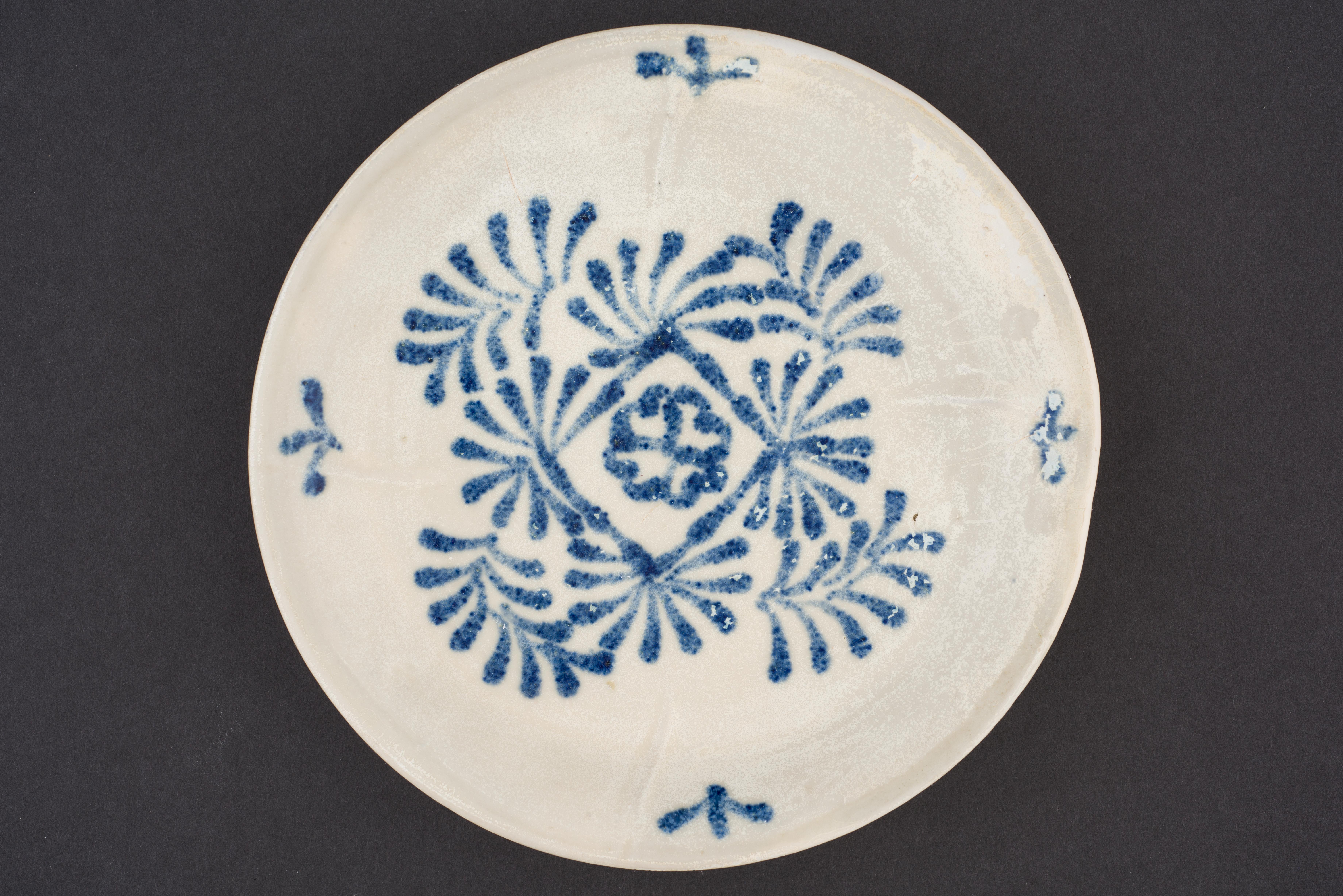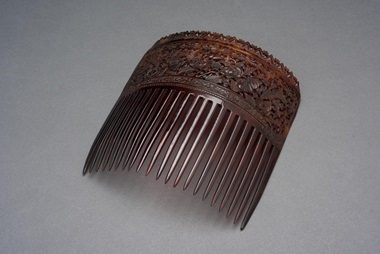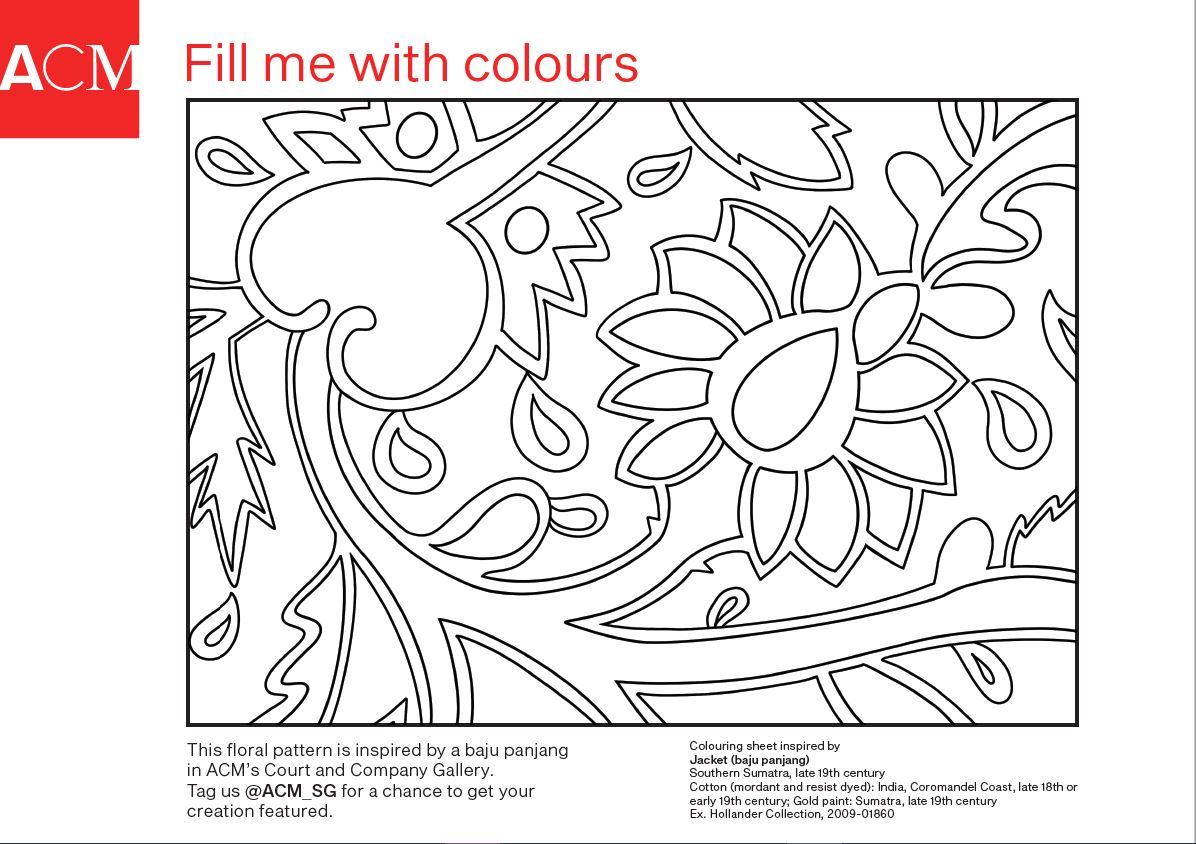This January, LET’S LEARN ABOUT…Trade Goods from Asia!
Over 2,000 years ago, objects made in Asia were popular in lands far away, such as Europe and the Middle East. Foreign merchants came to Asia via land and sea routes to trade for and sell a variety of goods – including Chinese ceramics, and silks, Indian cotton, and Southeast Asian spices, oils, and woods.
Many of these foreign traders were fascinated with the materials used to make objects, and amazed at how detailed and well-crafted they were. Porcelain was recognised around the world as something only China and Japan could produce, and India was known for their exquisite fabrics, as well as mother-of-pearl, and tortoiseshell objects.
What are some made-in-Asia objects that people in the past loved to have? Let’s take a look at a few from ACM’s collection.
OBJECTS FROM OUR COLLECTION
.jpg?h=286&w=380) |
|
Jacket (baju panjang)
Southern Sumatra, late 19th century
Cotton (mordant and resist dyed): India, Coromandel Coast, late 18th or early 19th century.
Gold paint: Sumatra, late 19th century
Ex. Hollander Collection, 2009-01860
|
The cloth used to make this European-style jacket was traded from India, and the gold designs were hand-painted when the cloth was tailored into a jacket in Sumatra. The gold added to enhance the beauty of the pattern on the cloth gives us a hint that the southern Sumatran owner of this jacket must have been wealthy.
India produced large quantities of cotton cloth, much of which was carried along sea trade routes to Southeast Asia. Their cotton and silk fabrics were lightweight, durable, and of very good quality, which made them popular in Asia and around the world for more than 2,000 years! Cloth makers in Southeast Asia even copied Indian designs and patterns.
In Southeast Asia, many of these fabrics were made into clothes. Others were used as decorations for ceremonies and became treasured family pieces that were passed down through generations.
You can find this baju panjang in the Court and Company Gallery on Level 1.
 |
|
Blue-and-white dish
China, Gongxian kilns, around 830s
Stoneware, diameter 23 cm
2005.1.00474
|
This dish on display in our Tang Shipwreck Gallery is among the oldest Chinese blue-and-white ceramics known. It was made in China around 1,200 years ago, to be carried along sea trading routes to the Middle East.
China and the Middle East shared in the creation of blue-and-white ceramics. Bright white ceramics produced by the Chinese were favoured by buyers in Iran and Iraq, while Iran specialised in making blue glazed ceramics. The blue was created with cobalt, a mineral available in Iran but not in China at that time. Adding blue to the white Chinese ceramics eventually proved to be a big hit!
A few hundred years later, blue-and-white porcelain from China became one of the most popular luxury products traded within Asia and around the world. You can find many blue-and-white porcelain jars, dishes, and other vessels in our Maritime Trade Gallery on Level 1.

|
|
Hair comb (peineta)
Philippines, 19th century
Tortoiseshell
2018-01189
|
This is a comb used to help hold long hair tightly in a bun. Have you seen combs like this before? These hair combs were first made around 200 years ago, and soon became popular in the Philippines. They were made in Manila, with Spanish colonial and Chinese decorations, for the local people as well as for sale to buyers in other countries.
When shorter hair styles became popular about 100 years later, these combs went out of fashion. You can find this tortoiseshell haircomb in our Maritime Trade Gallery on Level 1.
CREATE

Illustration by ACM staffer, Prunella Ong
Download this colouring sheet HERE and fill up the patterns of the baju panjang with your favourite colours. Don’t forget to tag us @ACM_SG to share your creation!
EXPLORE
Check out ACM Adventures: Let’s Dance! for activities inspired by a dancing water pitcher found in the Maritime Trade Gallery. Learn through art, craft, and movement in our signature family programme happening every last Sunday of the month!
Or head to NHB’s one-stop heritage portal Roots.sg to read more about the objects featured:
Jacket (baju panjang)
Hair comb (peineta)
Want more of these resources? Come back to learn new things every month.
Missed a monthly post? Not to worry, we keep past topics here for you.
What else would you like to learn about? Tell us here.
There’s more!
Check out other videos and download e-resources inspired by the objects in ACM’s collection.